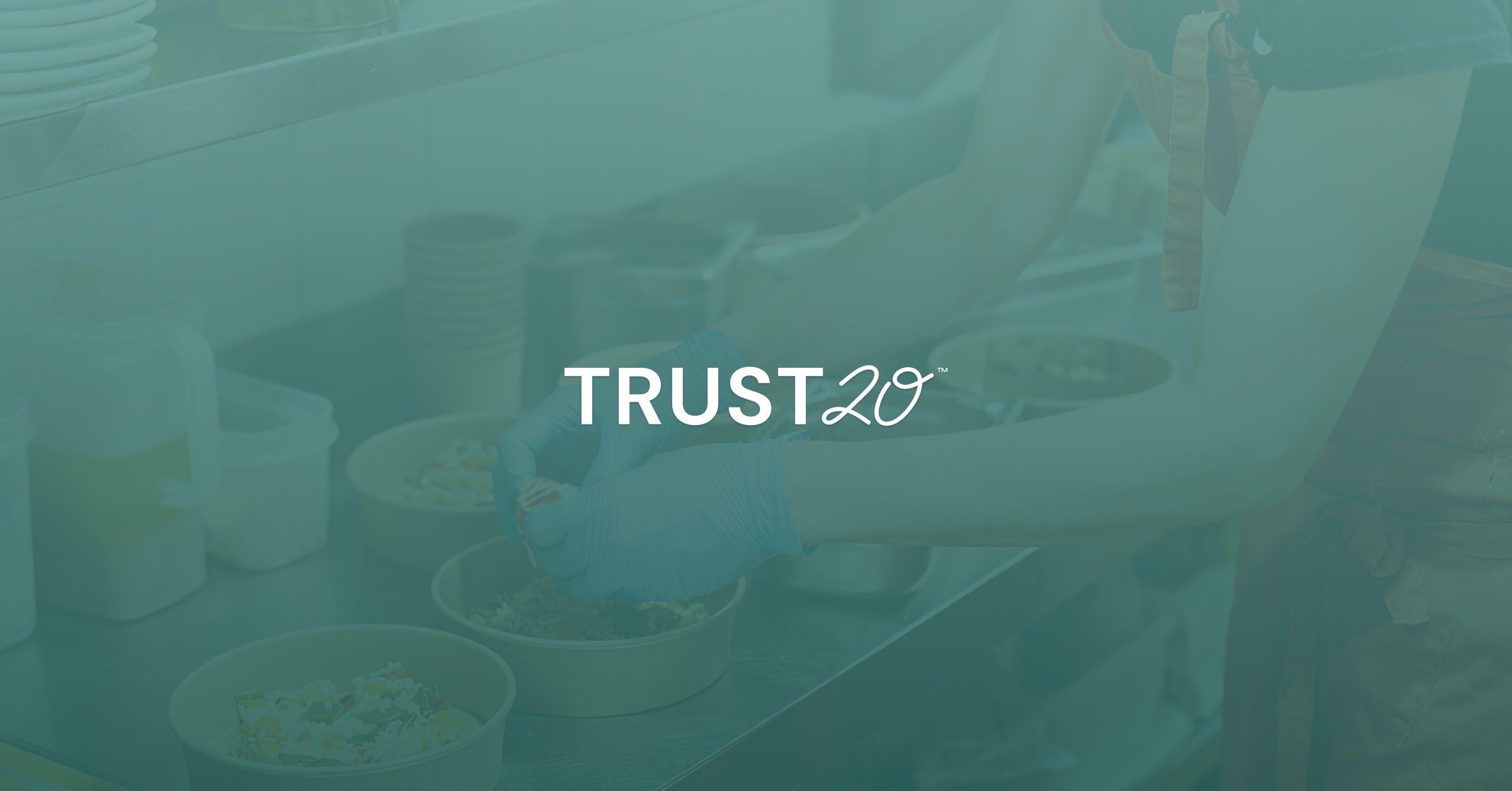Do you prepare or serve food as a part of your job? Do you need a food handler card? Then you're in the right place!
In general, Trust20’s ANAB-accredited Food Handler Certificate training is perfect for anyone who wants to learn about the essentials of food safety. More specifically, people who work with unpackaged food, food equipment or utensils, or food-contact surfaces should consider food safety training.
It can be beneficial for food distributors, warehouse workers, and grocery store staff to receive food safety training as a part of understanding time/temperature control, pest control, and how food becomes unsafe. Teachers at snack time or CNAs working at senior living facilities may even fill in as a food handler on occasion–meaning they can also benefit from knowing food safety basics.
Now if you’ve been hired as or recently promoted to manager: first of all, congratulations. Secondly, you may be in need of a Manager or Person-In-Charge Certification or training to become a Certified Food Protection Manager. These certifications not only verify that you have sufficient food safety knowledge to protect customers from foodborne illnesses, but also that you can properly share that knowledge when you train the people on your team.
But for the purposes of this article, let's focus on Food Handler Training. Here is what will be covered:
Food Handler Certificate requirements and accreditation
Choosing a food safety training
Why Trust20 has the right course for you
Food Handler Certificate requirements and accreditation
There are some states that require everyone working in a foodservice establishment to have a food handler certificate or food handler card from an ANAB-accredited organization.  An accredited training means that a course conforms to the standards put forth by the ANSI National Accreditation Board (ANAB)–a non-governmental organization that provides accreditation services and the largest accreditation body in North America.
An accredited training means that a course conforms to the standards put forth by the ANSI National Accreditation Board (ANAB)–a non-governmental organization that provides accreditation services and the largest accreditation body in North America.
If you’re working at a business in Alaska, Arizona, California, Florida, Illinois, Oregon, Texas, Utah, and Washington-now is the time to seek out and take an approved food safety training. Requirements differ state to state. Always check with your manager and local health department regarding the regulations of the jurisdictions you live in–some counties in other states require staff to receive accredited training as well.
Choosing a food safety training
If you search for “food safety training” or “food handler card,” endless choices will appear. It may be tempting to click on the first result to get it over with, but you and your career can benefit from taking time to dig a little deeper.
When you’re looking at purchasing access to a food handler training you should take into account how long the course is, how the content is structured, and when it was last updated. Regulations do change and it is important that the most up-to-date information is available to you. Accessibility options such as multiple languages, mobile-friendly design, and ease of use can also make sure you have a smooth learning experience. Let’s face it-training is something we all try to get through as fast as possible. Why take a course that makes it harder than it has to be?
Why Trust20 has the right course for you
Trust20’s training was created with the help of industry experts and instructional designers, as well as feedback from past and present food handlers themselves. We released the course in 2021 and regularly review the content to ensure it is still relevant, while making improvements to our mobile experience and preparing to release an update that includes a course offering in Spanish. The course and assessment are both designed to feel like a game – and we hope you can enjoy yourself at least a little bit along the way!
Questions about Trust20’s Food Handler Certificate training? Visit the Food Handler Certificate page and start your food handler training today!
Sources:






.png)

.png)
